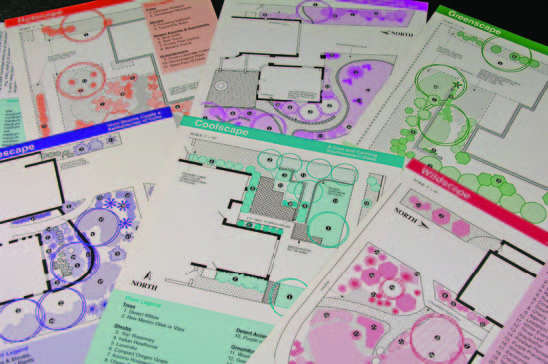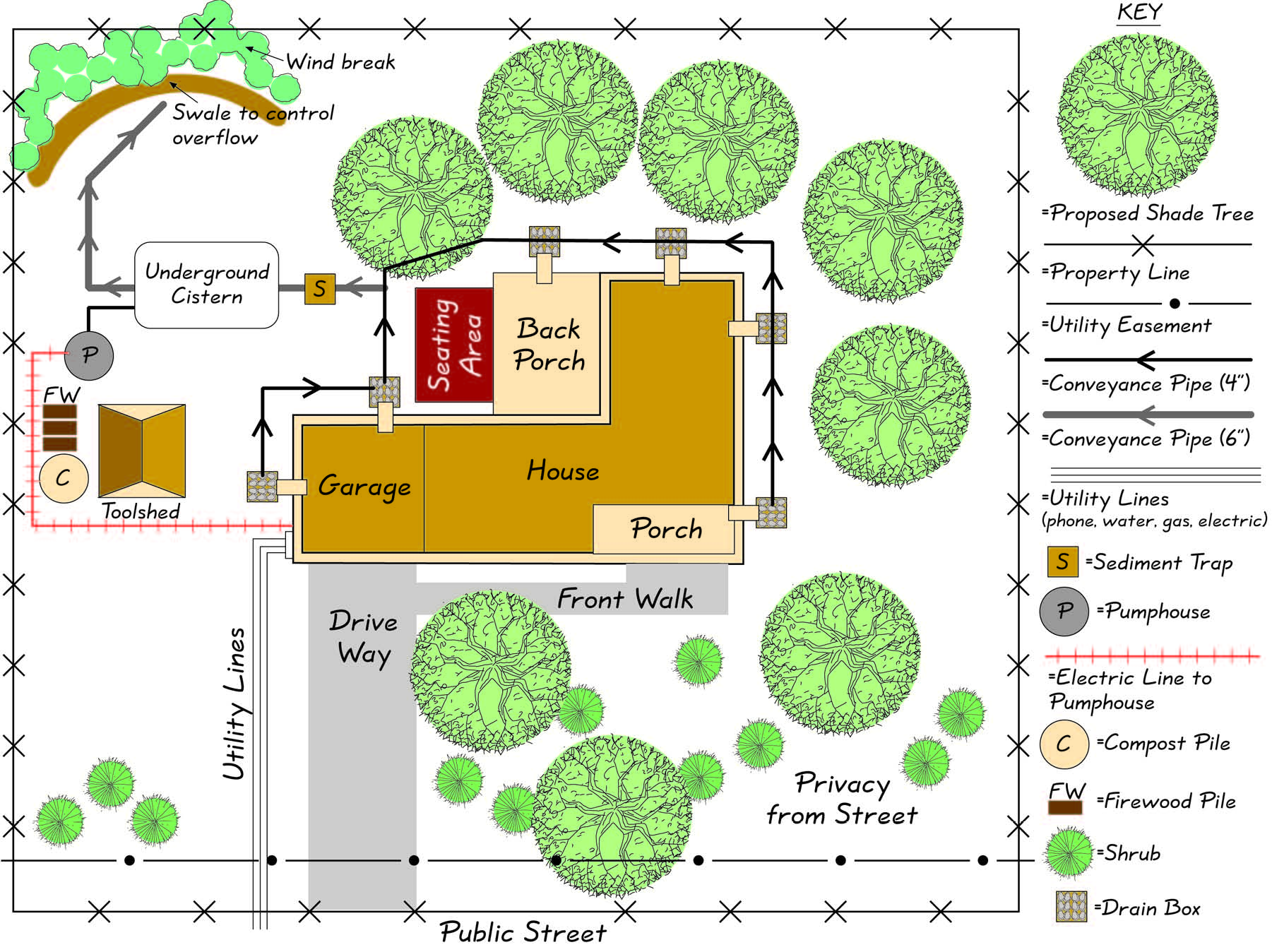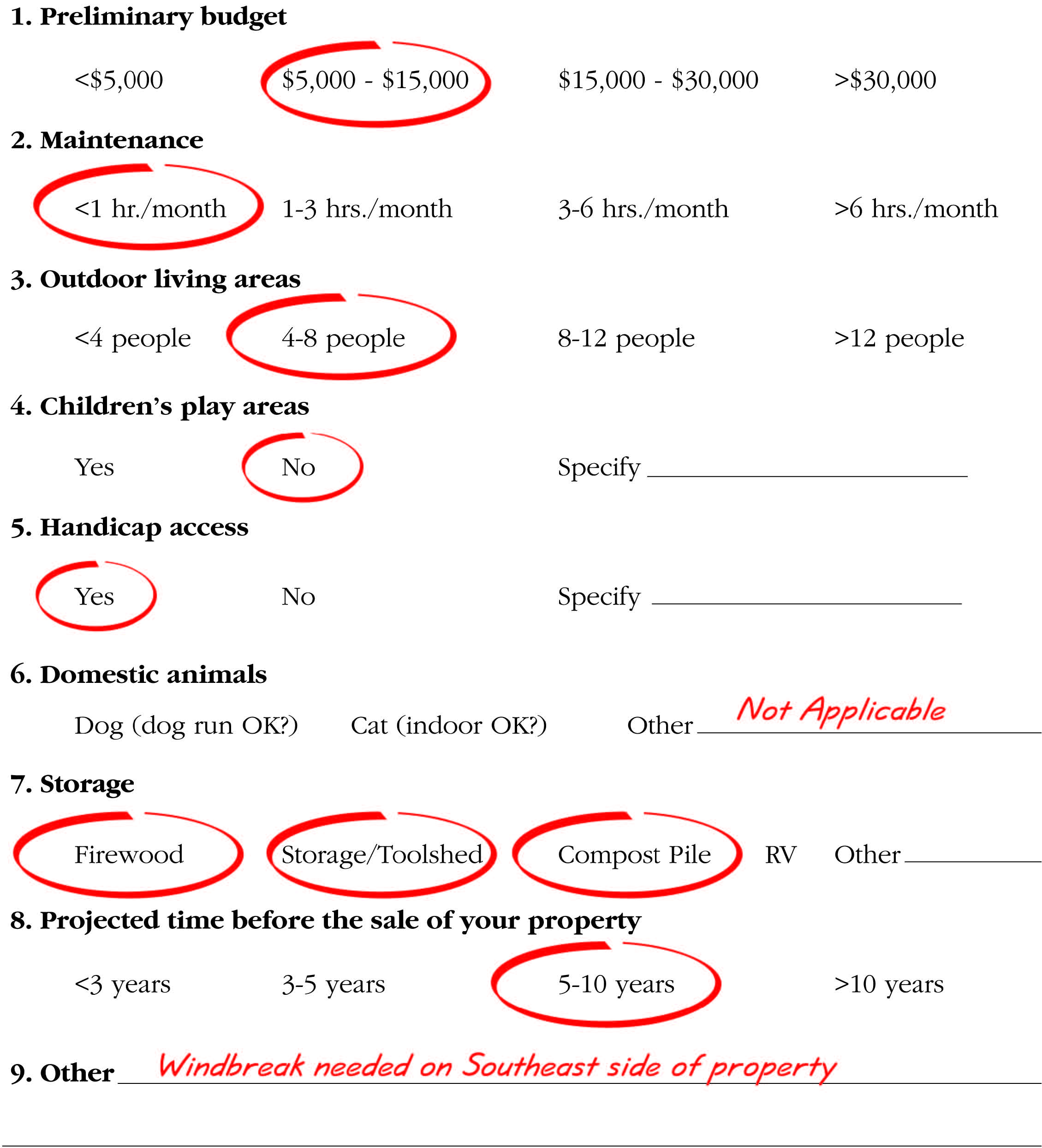The PermaDesign Weblog, with Nate Downey and Melissa McDonald!
Roof-Reliant Landscaping™ Step 12C: Planning and Designing PHASE 3: Develop a Conceptual Plan

The third phase of landscape design is the development of a conceptual plan. Here, you integrate the scope and goals of your design with your site observations and evaluation. A conceptual plan provides the basic form of your landscape design, which includes the most important requirements of the plan with few details.
Every conceptual plan shows three types of features: fixed, variable and natural. Fixed features include property lines, easements, utility lines and exterior walls of permanent structures. Fixed features also include existing hardscaped areas, parking areas, driveways and pathways.
Variable features are those that could work in more than one place in your landscape. These can include cisterns, entertainment areas, play areas and planting beds.
Your conceptual plan should also reflect the information about the natural features of yourlandscape that you gathered from your observations and research in the site evaluation phase of the landscape design process. You should indicate where moisture collects, where prevailing winds come through, where temperatures differ, where you'll have summer shade and winter sun, where wildlife corridors and habitat exist, and so forth.
It is important to place your cistern system somewhere on your conceptual plan, knowing that at any time during the design process you can always change its location, its relationship to grade and its size.
The figure below (a finished conceptual plan) and the next figure (a filled out Worksheet 2) show how the conceptual plan and the worksheet can work together.


10/26/2015 | (0) Comments










Comments